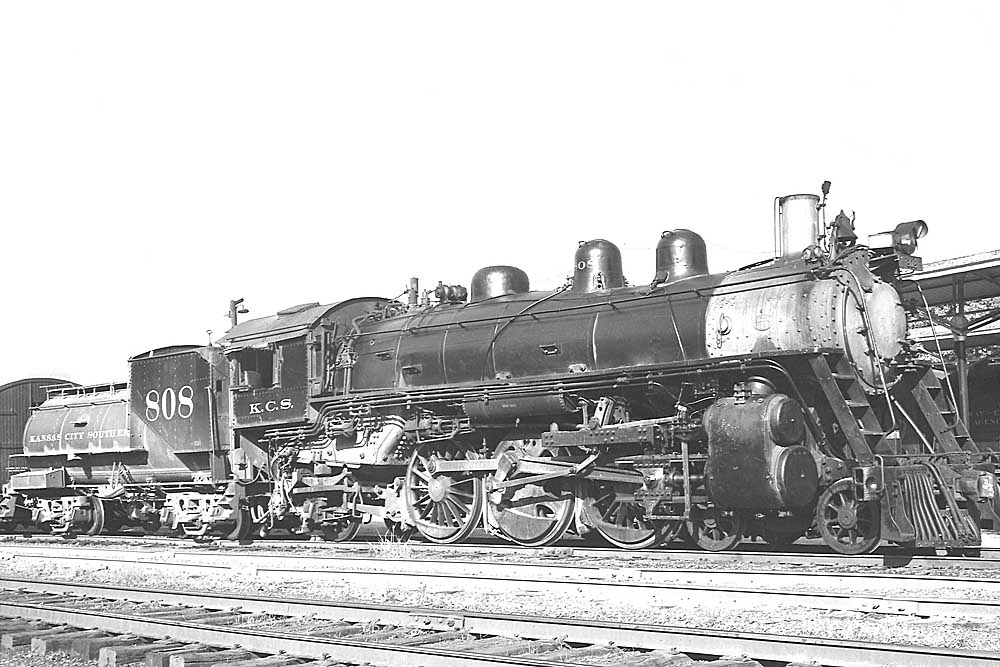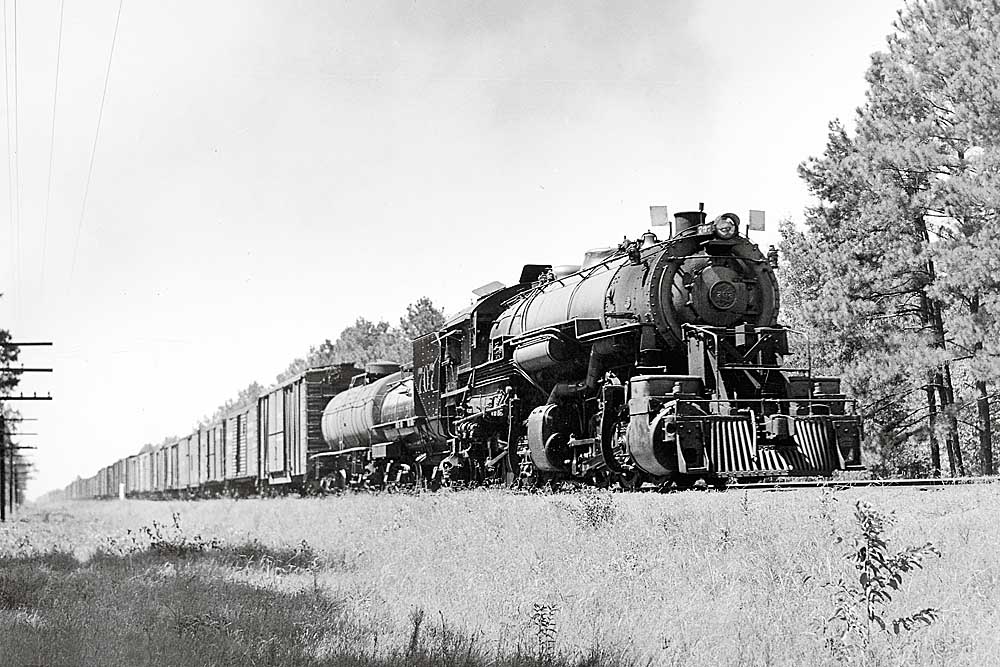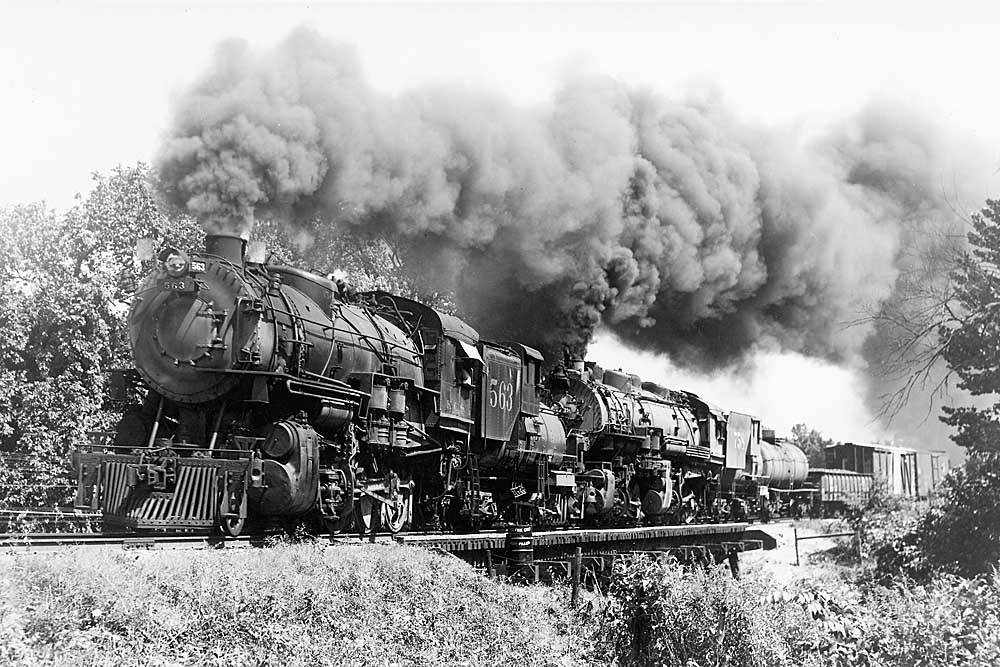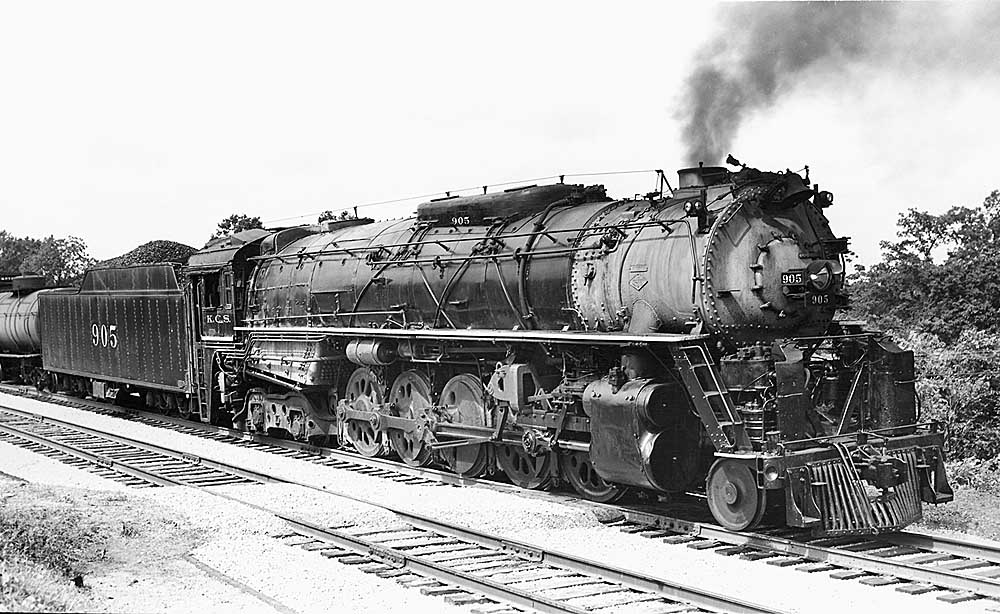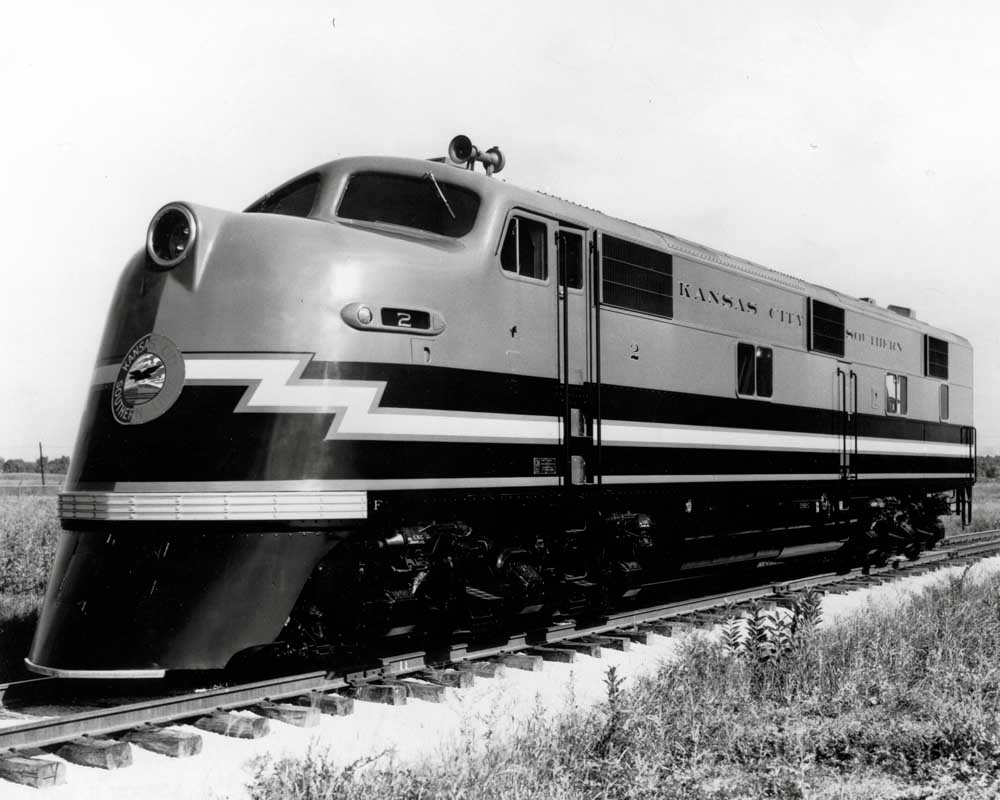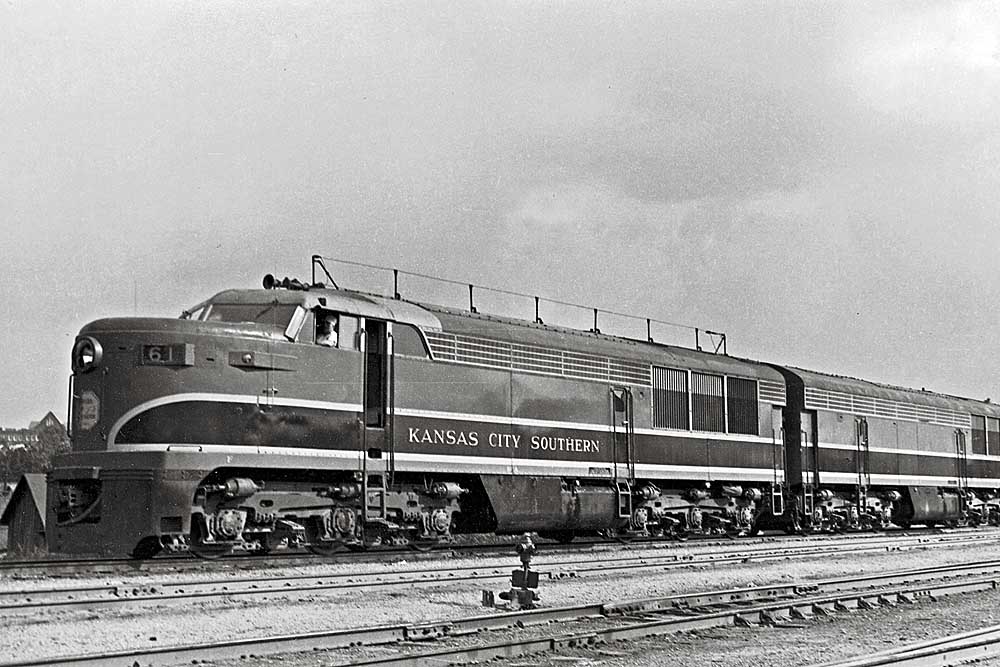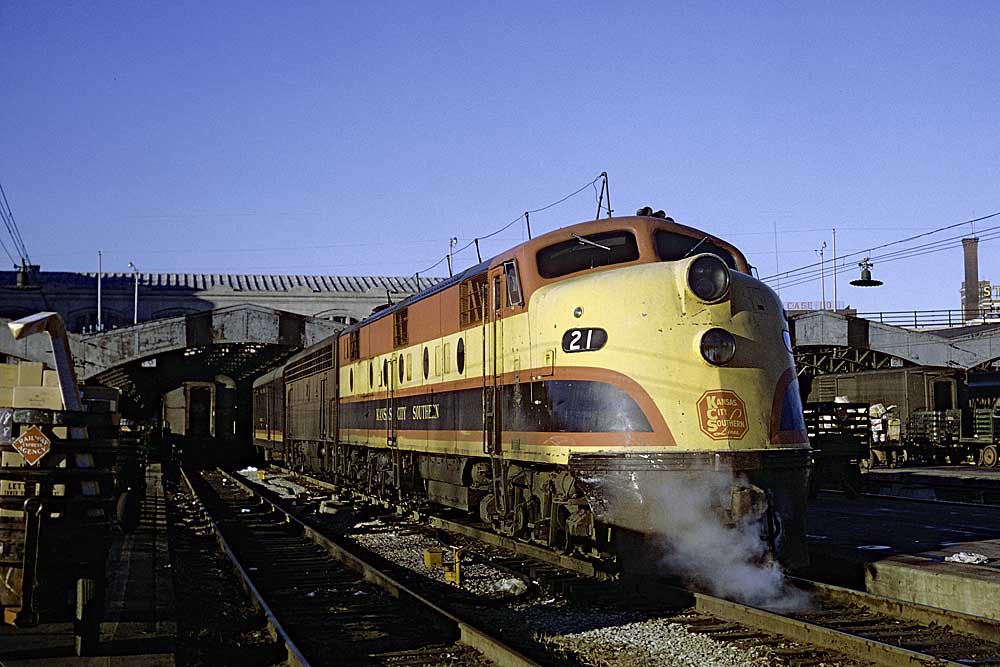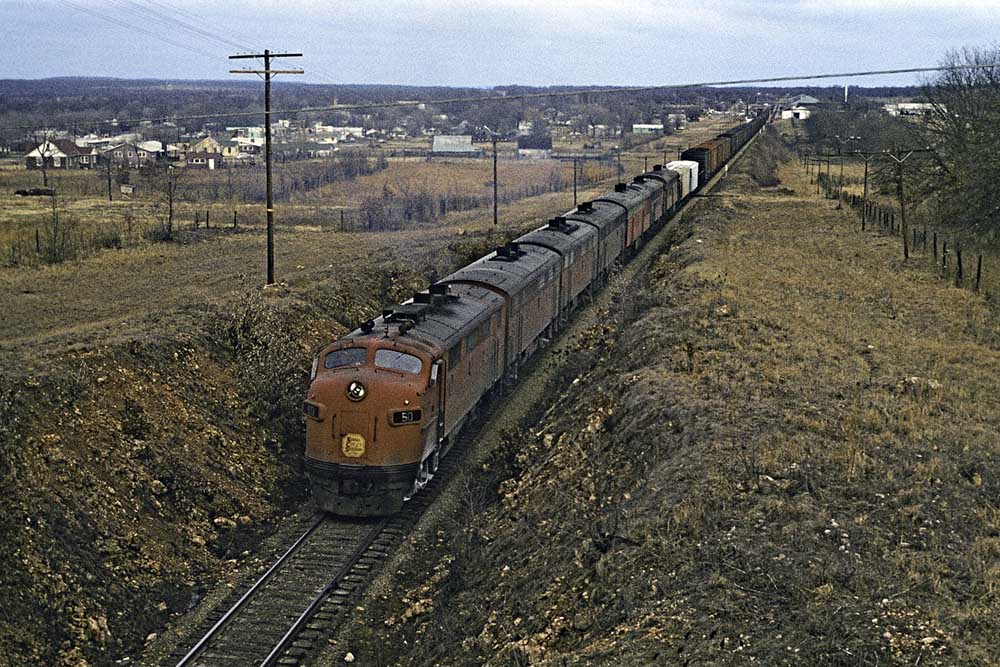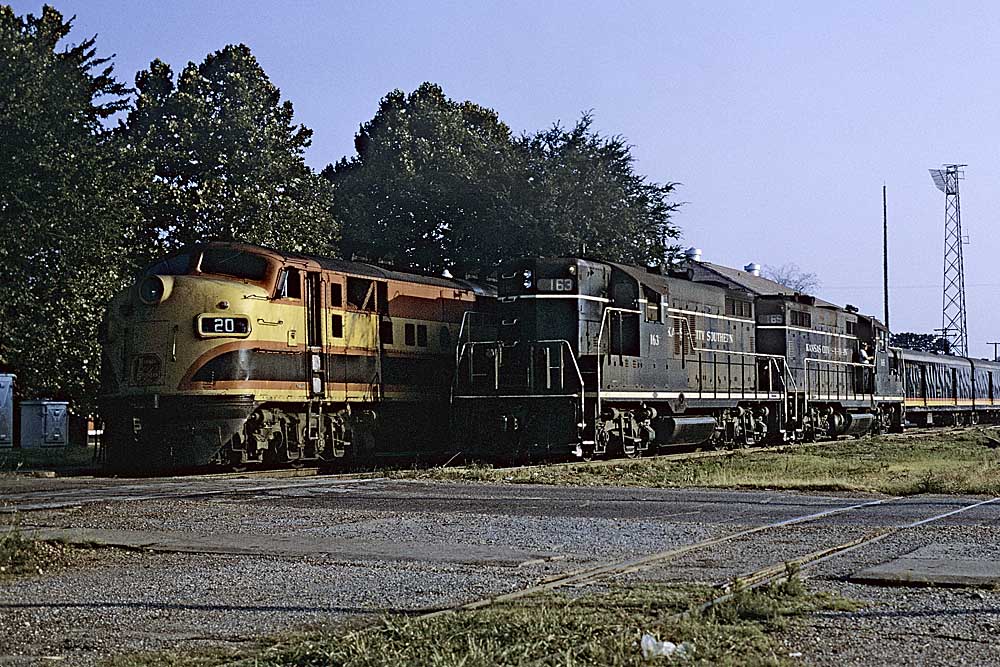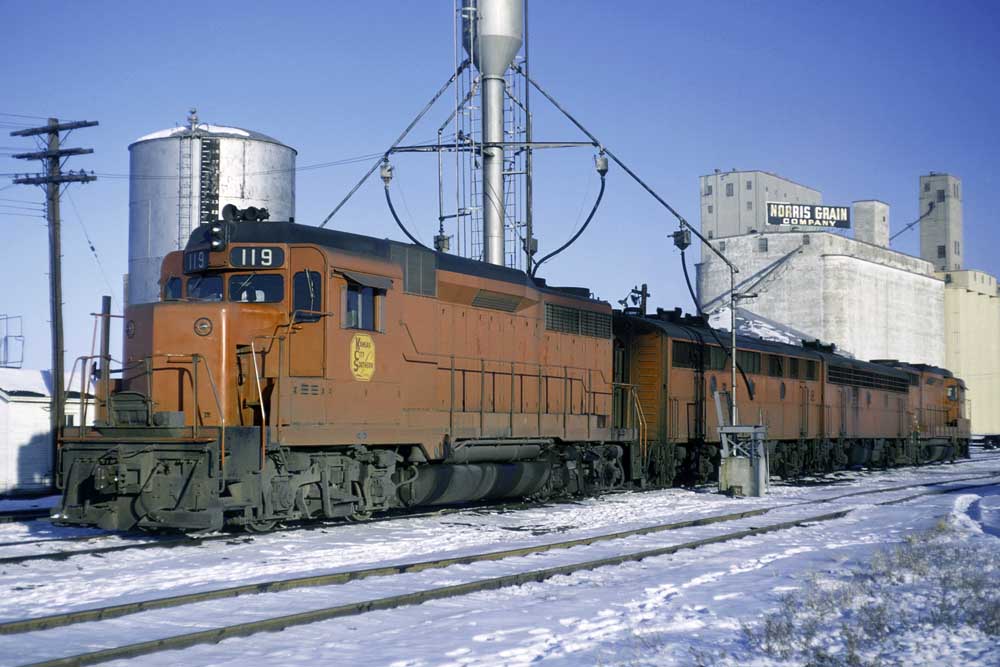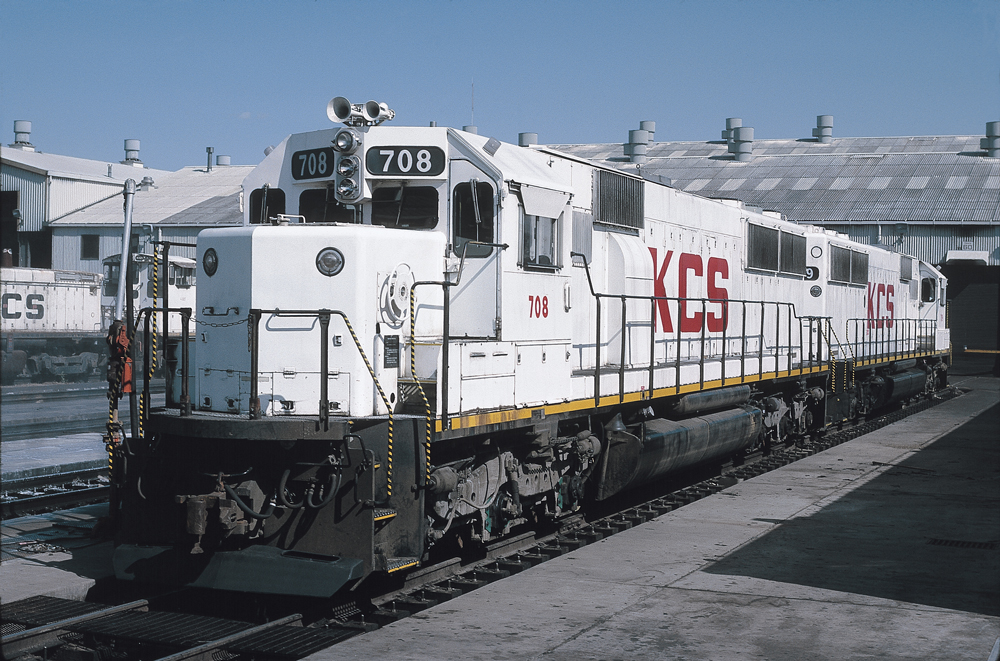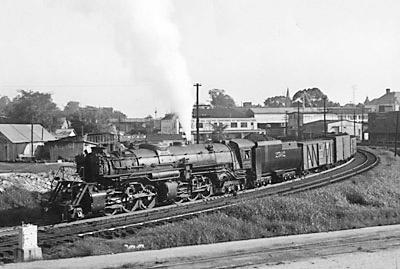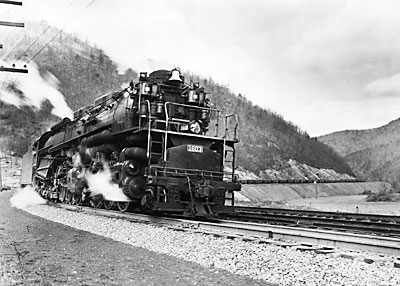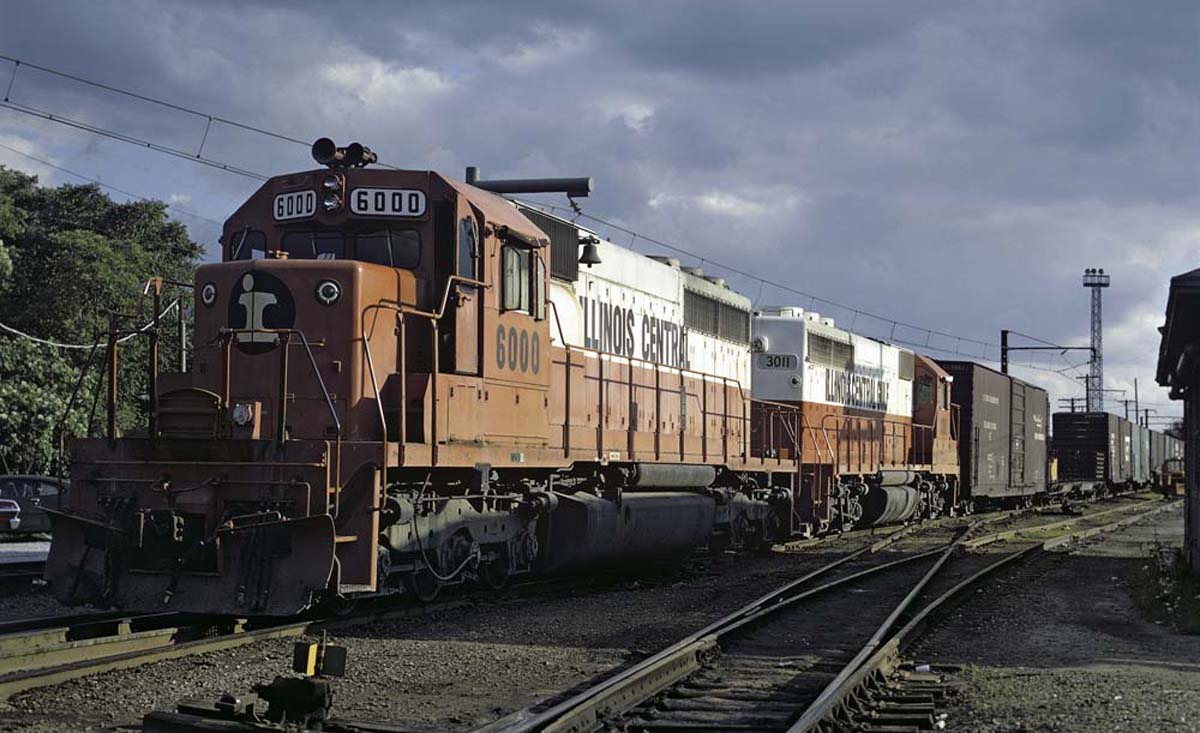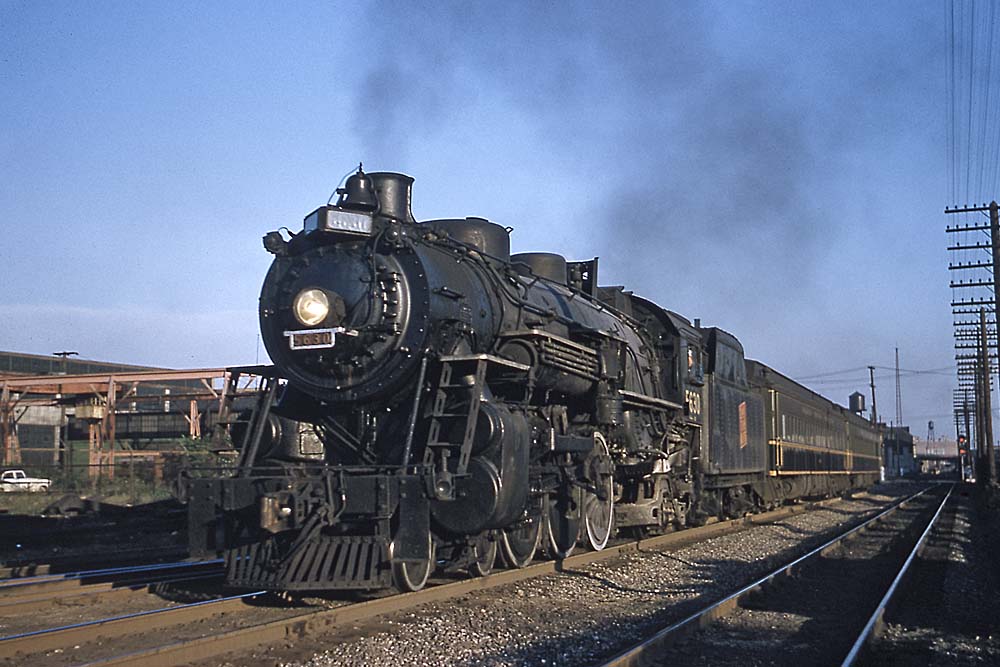From 0-6-6-0s on the main line to Shays on industrial trackage, KCS left a surprising locomotive legacy
Kansas City Southern locomotives were full of surprises in both the steam and diesel fleets.

Pacifics like No. 808 (built by Schenectady in 1919) were Kansas City Southern’s most modern passenger power. The second sand dome is unusual on a passenger engine. Charles E. Winters photo


The evolution of Kansas City Southern locomotives is shown here, from the top. In 1933, 0-6-6-0 No. 707, built at Schenectady in 1912, flaps along with a freight at Cedar Grove, La. KCS was unique in operating the 0-6-6-0 as a road engine. C. W. Witbeck photo


In the mid-1940s, a Kansas City Southern “redball” freight roars through an Ozarks dell near Joplin, Mo., behind 2-8-0 563 and 2-8-8-0 758. William K. Barham photo


Kansas City Southern’s Lima-built class J 2-10-4s took 2-8-8-0-sized trains and ran with them. No. 905 is pictured after World War II. Preston George photo


E3 No. 2, delivered in 1939, was later renumbered 22. This photo shows the road’s intricate early paint scheme. Electro-Motive Corp. photo


Kansas City Southern, was one of seven buyers of 2,000 hp Fairbanks-Morse “Erie-built” units. The units derived their name from their assembly at General Electric’s facility in Erie, Pa., when FM didn’t have capacity at its Beloit, Wis., plant. A three-year-old cab-booster set rests at Shreveport, La., in July 1949. Harold K. Vollrath photo


Kansas City Southern E3 21, the road’s first E unit, handles the Southern Belle at Kansas City Union Station on Dec. 29, 1962. J. David Ingles photo, Brian M. Schmidt collection


A Kansas City Southern freight with seven units rolls by at Stilwell, Okla., on Jan. 2, 1965. Note the fifth and last units are FM Erie-builts. J. David Ingles photo, Brian M. Schmidt collection


Kansas City Southern GP9s 163 and 165 moseyed by toward the Heavener, Okla., yard, then the 163 came back with the “big hook” to go south to rerail an errant tank car. The Geeps display the road’s early black-and-white paint scheme for freight units. J. David Ingles photo, Brian M. Schmidt collection


Two of Kansas City Southern’s 20 GP30s and two F unit boosters rest on a Kansas City, Mo., Joint Agency Yard service track in 1968. J. David Ingles photo, Brian M. Schmidt collection

Steam locomotives saw a gradual evolution, from 2-8-0 to articulated 0-6-6-0s (an oddball in the industry for road service) and 2-8-8-0s and eventually the much-vaunted 2-10-4s of 1937. The 0-6-6-0s were the largest group of the type built and operated between Pittsburg, Kan., and Westville., Okla., where grades reached 1.75%. The 2-10-4s sported 42-inch wheels on the lead truck (compared with 33-inch industry standard), 70-inch drivers, and two sand domes. For wartime traffic, KCS acquired secondhand 2-10-2s. Passenger power peaked with the Schenectady-built 4-6-2s of 1912 and 1919. Also of note, KCS rostered two three-truck Lima Shay locomotives for use on steep industrial trackage around the Missouri River valley.
Kansas City Southern locomotives added diesels with Electro-Motive passenger E units in 1939 for the Southern Belle, and began dieselizing freight trains after World War II with EMD F units and Geeps. Dieselization was completed in 1953. Other than a few oddballs including Fairbanks-Morse Erie-builts and a few Alco and Baldwin switchers, KCS was primarily an EMD customer. Of note, KCS used its 2,000 hp Erie-built units in freight service.
Early Kansas City Southern diesel units were painted in an intricate, multi-color paint scheme. The road later settled on the well-known red, yellow, and black for passenger power and black-and-white for freight units. In the 1960s, it transitioned to an all-red scheme under the administration of William N. Deramus III and in the 1980s to all-white. In the 1990s, some color returned with gray-and-yellow becoming the primary colors before readoption of the old “Southern Belle” passenger scheme in the early 2000s.





